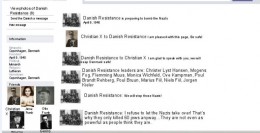This lesson is for : Grade 6:
Summary
In this lesson, students make connections between the novel Number The Stars, by Lois Lowery, and create digital projects. Each week students pick from a variety of “themed” tasks to apply to their learning from the week. Students use independent research as well as textual evidence for characterization, imagery, setting, conflict, plot, and theme to create a variety of tangible digital projects. Through the use of digital storytelling technology, students increase their comprehension of fictional texts, as well as their understanding of how imagery can help you unpack multi-layered, complex texts.
TIPC Ratings
Research & Information Fluency
Rating: Ideal – Explanation: Students read, Number the Stars and researched Denmark for their projects. Students used a variety of resources to develop their own ideas about historical events. Students used that information to created a variety of projects including Facebook pages (used a Powerpoint template to create authentic feel of social media site), news articles, historical timelines, and memory collections to name a few. Students used this information to advocate, express, and show their understanding of the novel and the historical events of that time period.
Communication & Collaboration
Rating: Approaching – Explanation: Students used a variety of digital tools to communicate their understanding and synthesis of characterization, imagery, setting, conflict, plot, and theme. The teacher designed weekly challenges to engage students in the text and the historic events of the time period.
Critical Thinking & Problem Solving
Rating: Approaching – Explanation: Students reacted to the text by researching further the events described. Students used the digital tools at their disposal to determine which events were historically accurate, assumed or a purely fictional event.
Creativity & Innovation
Rating: Ideal – Explanation: Students created a variety of digital projects on a weekly basis. They were able to pick from a list of potential tasks. Students synthesized information from the book and their research to create dynamic products.





